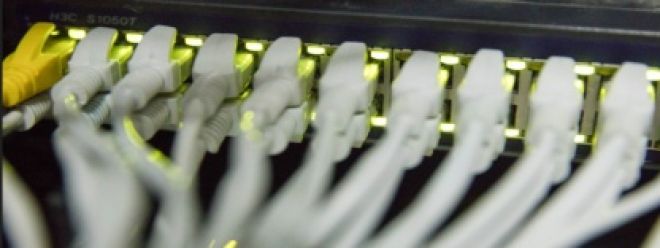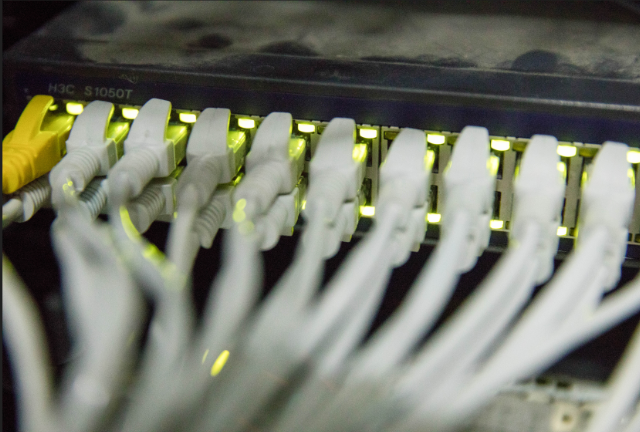How Fast is Fiber? do you know?

How Fast is Fiber? do you know?

Fiber optics are the fastest way we can transfer data, which is why installing fiber optic internet in your home can provide such a smooth internet experience. Even if we don't have fiber connections in our homes, most of the internet is built with fiber optics, so we use this technology every time we visit a website. But how fast is fast? How does fiber optic speed compare to other types of internet connections?
How Fast Can Fiber Get the Job Done?
When most people talk about internet speed, they want to know how fast their internet connection can download files or play videos. It depends on the connection download speed (or bandwidth), and fiber is the clear winner in this category.
Most fiber providers offer speeds up to 1Gbps (1,000Mbps), but that's by no means the limit of fiber optic technology. Some providers already offer multigigabit speeds, such as AT&T's 5Gbps (5,000Mbps) fiber plan. Google owns a submarine cable linking North America and Asia with a bandwidth of 60Tbps (60,000,000Mbps), so unlike technologies such as Digital Subscriber Line, fiber still has a lot of untapped potential.
Having a fast connection becomes very important. Just downloading a recent video game is nearly impossible without a good internet connection, and still requires some forethought for most connections.
Data storage is usually measured in bytes (B), while internet speed is usually measured in bits (b).
Fortunately, downloads that take hours or days on slower connections can be completed in minutes on a good fiber connection. All the time savings add up, so the more you work with videos, software, and other large files, the more worthwhile the high-speed fiber connection will be.
Download speed is what people usually talk about when wondering how fast their internet connection is, but fiber is fast in other ways too. Compared to some other types of connections, fiber optic cables actually transmit data at the speed of light!
It's a little more complicated than that. When people talk about the speed of light, they usually mean the speed of light in a vacuum. When light travels through another substance, such as water, air or a fiber optic cable, it travels slower. Light travels about 31% slower in fiber optic cables, which means data travels at 206,856,796m/s. In other words, it takes an internet signal one millisecond for every 206.9 kilometers of fiber it travels.
If a person who lives in Seattle wants to chat with a friend who lives in Tokyo, it takes at least 23 milliseconds for the information to reach Japan via the submarine cable. This slight delay is called latency speed.
What about other lightspeed signals?
Fiber optics aren't the only type of connection that sends information at the speed of light. Wireless connections like fixed wireless or satellite can actually achieve higher speeds because light travels faster in air or space than in fiber optics. So why are fiber optic connections still faster?
The advantage of fiber optics is that the light passing through the cable is confined in the core by total internal reflection. This allows the signal to follow the cable as it bends.
On the other hand, wireless signals must travel in straight lines. This makes it difficult to send signals around the Earth's surface. That means that to talk to a friend in Tokyo via satellite, the message has to travel all the way to Earth orbit and back, with a delay of at least 238 milliseconds, more than ten times that of sending a message over fiber optics.
Is fiber faster in other ways?
Another important metric for measuring internet speed is upload speed, and once again fiber is the clear winner. While most online activities rely primarily on download speeds, other activities, such as live streaming and video chatting, also require good upload speeds.
Connections such as cable and most types of DSL offer much lower upload speeds than download speeds. A cable connection with a download speed of 1,000Mbps might only offer an upload speed of 35Mbps.
Fiber optics, on the other hand, offer symmetrical upload and download speeds. This means that if there is a 1,000Mbps plan, our upload speed is also 1,000Mbps.
Is fiber better because it's faster?
Fiber is better because it's faster, less prone to slowdowns, and has faster upload speeds. Speed is certainly what gets many people excited about fiber optics, but its other advantages are also important factors.
Fiber optic signals travel farther
Signals sent over fiber optic cables can travel farther without loss of quality than signals transmitted over other connections. DSL and dial-up Internet send electrical signals over copper telephone wires. As a signal travels along these wires, it begins to attenuate the farther it travels from the central office. That's why even in the early days of DSL, the backbone of the internet still used fiber optic connections to transmit data over long distances. 7
Wired networks use coaxial cables, which are made of copper, like telephone wires, but protected by a braided copper jacket that shields the inner core of the cable. This shielding enables the cable to transmit high-frequency electrical signals with low loss of signal quality.
Instead of using electrical signals, fiber optic cables use light of different frequencies to send information. Fiber optic networks can be built with different light sources, from simple LEDs to high-power lasers. Some of them can transmit data up to 4,000 kilometers without significant loss of signal quality.
This makes fiber optics a better choice for network infrastructure than copper or coax.
How Fast Can Fiber Optics Be?
We don't yet know the maximum amount of data that's physically possible to transmit over a single fiber, but it's a lot. The current record for transmission over a single fiber is 10.16Pbps, set in 2017. That's 10,160,000,000Mbps, and it could get faster as multiplexing improves.
Another technological development is photonic chips, which could replace current optical data encoders and thus significantly increase fiber-optic bandwidth. The current record for one of these chips was set by researchers at the Technical University of Denmark, who transmitted data over several miles at a rate of 1.84Pbps.
As technologies such as multiplexing improve, each type of connection will become faster, but some will benefit more than others. For example, it is possible to increase cable speeds to 10Gbps, enough to compete with current residential fiber optic networks. 10 While 10Gig speeds would be a huge improvement over current cable connections, the leading edge of fiber optic research is already over a million times faster.
Either way you look at it, fiber is the fastest type of internet connection available, and that doesn't look like that's changing anytime soon.
Summarize
Fiber is great, which is why we would recommend fiber over other types of connections if it was available in our area. It's also usually less expensive than slower connection types, so it's worth considering even for those on a tight budget.